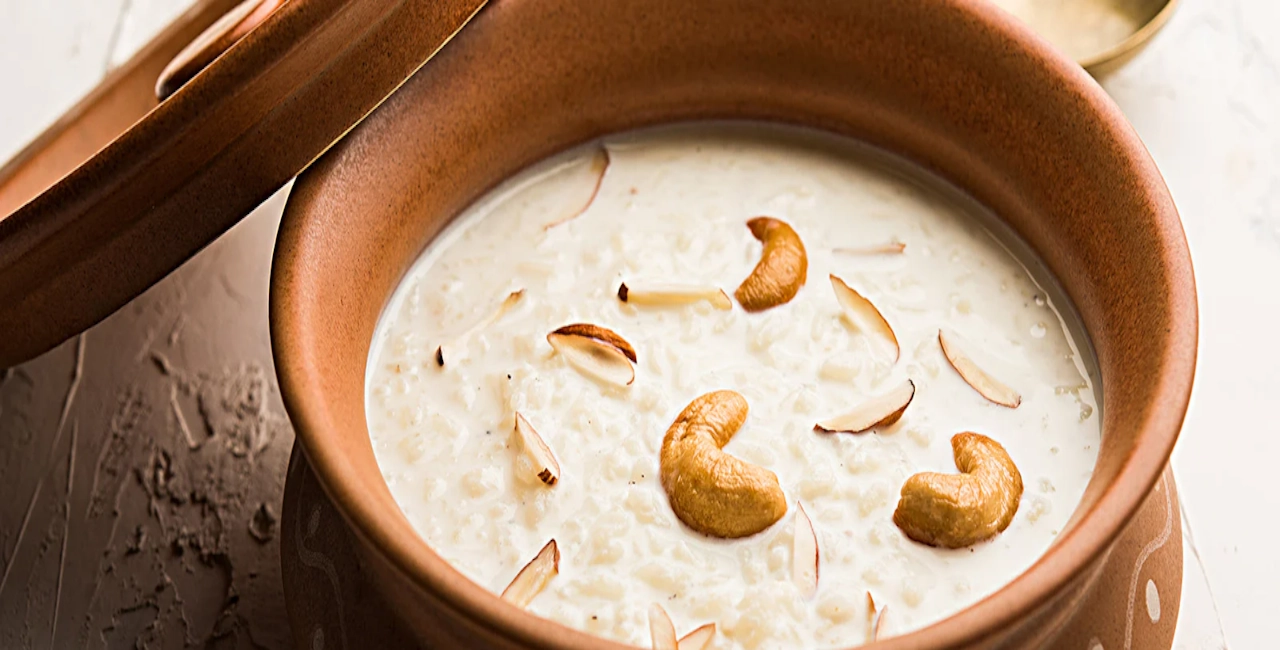Currently Empty: ₹0.00

Jhangora Ki Kheer, a traditional dessert from the Indian state of Uttarakhand, is a beloved sweet dish made from barnyard millet, known locally as jhangora. This dish is not only a staple in the region’s culinary repertoire but also a symbol of the rich agricultural and cultural heritage of the Himalayan state. Its unique flavor, nutritional value, and cultural significance make it a cherished part of Uttarakhandi cuisine.
Understanding Jhangora: The Millet Grain
Jhangora, or barnyard millet, is a small, nutrient-rich grain that thrives in the high-altitude regions of Uttarakhand. It is known for its high fiber content, vitamins, and minerals, making it a wholesome alternative to more commonly used grains like rice. This millet has been a traditional food source for generations, especially in the Himalayan regions where it is well-suited to the local climate and soil conditions.
Barnyard millet has a slightly nutty flavor and a texture that holds up well in cooking, making it an ideal ingredient for various traditional dishes, including Jhangora Ki Kheer. Its health benefits, including aiding digestion and providing sustained energy, have contributed to its popularity in regional diets.
The Art of Making Jhangora Ki Kheer
Jhangora Ki Kheer is a simple yet delectable dessert that highlights the versatility of barnyard millet. The preparation of this kheer involves a few key ingredients and steps, each contributing to its rich and comforting flavor. Here’s a basic outline of how this traditional dish is made:
- Ingredients:
- Barnyard millet (jhangora): 1 cup
- Milk: 4 cups
- Sugar: 1/2 cup (adjust to taste)
- Ghee (clarified butter): 2 tablespoons
- Cardamom powder: 1/2 teaspoon
- Chopped nuts (almonds, cashews, and pistachios): 2 tablespoons
- Raisins: 2 tablespoons
- Saffron strands (optional): a few
- Water: 1 cup (for soaking)
- Preparation:
- Soak the Millet: Rinse the barnyard millet thoroughly and soak it in water for about 30 minutes. This helps in softening the grains and reducing the cooking time.
- Cook the Millet: In a pan, heat ghee and add the soaked millet. Sauté the millet in ghee for a few minutes until it turns slightly golden and releases a nutty aroma.
- Add Milk and Cook: Pour in the milk and bring it to a boil. Reduce the heat and let it simmer, stirring occasionally, until the millet is cooked and has absorbed the milk. This process usually takes about 20-30 minutes.
- Flavor and Sweeten: Add sugar, cardamom powder, and saffron strands (if using). Continue to simmer for a few more minutes until the kheer thickens and the flavors meld together.
- Finish with Nuts and Raisins: In a separate small pan, lightly roast the chopped nuts and raisins in ghee until they are golden. Stir these into the kheer just before serving.
- Serving: Jhangora Ki Kheer can be served warm or chilled, depending on personal preference. It is often enjoyed as a comforting dessert after a meal or during special occasions and festivals.
Cultural Significance and Variations
Jhangora Ki Kheer holds a special place in the hearts of people from Uttarakhand. It is often prepared during festivals, special family gatherings, and ceremonial occasions. The dish reflects the region’s traditional farming practices and the importance of local ingredients in daily life.
While the basic recipe remains consistent, variations of Jhangora Ki Kheer can be found across different households. Some variations might include additional ingredients such as coconut, jaggery, or dried fruits to enhance the flavor and nutritional profile. The use of different spices and flavorings also adds to the versatility of this beloved dessert.
Health Benefits
Jhangora Ki Kheer is not only delicious but also nutritious. Barnyard millet is a good source of protein, fiber, and essential minerals such as iron, magnesium, and phosphorus. It is also gluten-free, making it a suitable option for those with gluten intolerance. The dish provides sustained energy and supports digestive health, making it a wholesome addition to any diet.
Conclusion
Jhangora Ki Kheer is more than just a dessert; it is a reflection of the rich culinary traditions and cultural heritage of Uttarakhand. With its comforting texture, nutty flavor, and nutritional benefits, this traditional kheer continues to be a cherished dish in the Himalayan region. Whether enjoyed during festive occasions or as a simple treat, Jhangora Ki Kheer embodies the essence of Uttarakhand’s rural charm and the timeless appeal of traditional cuisine.


